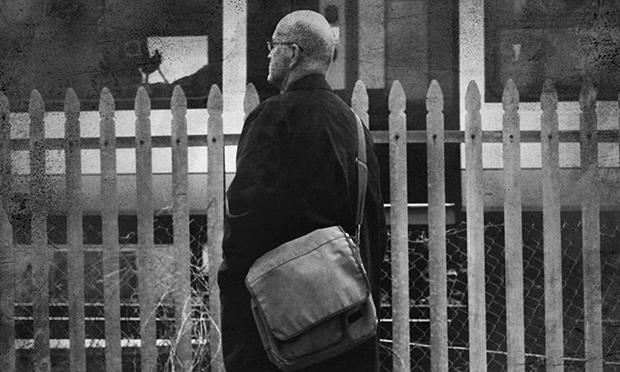Book review: London Overground – Iain Sinclair turns cultural archaeologist
Iain Sinclair is no stranger to vast, impossible circuits. At the turn of the century, he conducted a series of walks along the M25 that amounted to its entire length, and drew from the experience an unprecedented document of poetic psychogeographical prose. It was a celebration of pilgrimage, a postmodernist jaunt through time and territory – to nowhere. Now, 15 years on, he’s turned his attention to the tracks of the ‘Ginger Line’ in London Overground.
The Hackney-based writer took inspiration for the project from a group of eccentric students he came across at New Cross Gate, on one of his regular suburban treks. He was headed, like Chaucer’s convoy, in the direction of Canterbury. The friends – “kids from Goldsmiths in fancy dress”, he assumes – had taken to gathering at random locations on the line to party at a moment’s notice.
In conversation with this “boho rabble”, garbed in gypsy skirts and goat masks, Sinclair finds his subject. “When they spilled out into Shoreditch,” he writes, “I realised that I had blundered once again into a version of London about which I knew nothing. And I would have to find some way to investigate. As he passed my window, the goat held up a finger to his lips. A warning I was foolish enough to ignore.”
His investigation takes the form of a day’s tramp around the railway: 35 miles and 33 stops in the company of filmmaker and close friend Andrew Kötting, whose presence is rich with a complex comic energy akin to his unique brand of documentary. Starting at dawn in Haggerston, the pair’s circumnavigation cuts through Wapping, Peckham Rye, Clapham Junction, Imperial Wharf, West Brompton and so on, before arriving back in the dead of night to Hackney.
Along the way, Sinclair interrogates the lay of the land and excavates meaning from forgotten and never-before-told narratives, inspecting the city’s detritus with wry humour and irresistible poetry. His grumbling observations of how the Overground has altered London are barbed and brilliant: “The railway smoothes history into heritage, neutralising the venom. Every Halt absorbs the last, until the necklace achieves a uniform, dull sheen. Faked pearls on a ginger string.”
Beyond the signature politics of development, regeneration and gentrification – climaxing in a fluke meeting with Boris Johnson “in full cry… barking like a seal” at Old Street Roundabout – the journey is an act of cultural archaeology. Sinclair dedicates swathes of razor-sharp prose to the likes of J.G. Ballard, W.G. Sebald and Leon Kossoff, riffing on Chelsea Harbour, manipulated histories and the railway as muse, respectively.
The most impressive of these diversions is given to Angela Carter, whom the author met on numerous occasions prior to her death in 1992. Sinclair’s moving trudge through Clapham inspires an overwhelming urge to read Wise Children and Nights at the Circus. In the same vein, his time in Hampstead impels a trip to the brief London residence of Sigmund Freud, who is described as a fabled force akin to Sherlock Holmes.
Of the house, which is now a ghostly and meticulously-preserved museum, the traveller writes: “Although it existed, and glowed a fiery red in our evening reverie, this blue-plaque address – 20 Maresfield Gardens – was as mythical in the psychogeography of London as the rooms associated with Sherlock Holmes at 22b Baker Street.”
For anyone unfamiliar with Sinclair’s work, London Overground is an ideal place at which to start. It’s shorter and somewhat lighter than previous publications, but is still crammed with nourishment. It’s another fine addition to the literature of our city.
London Overground: A Day’s Walk Around the Ginger Line is published by Hamish Hamilton
ISBN: 978-0241146958. RRP: £16.99

